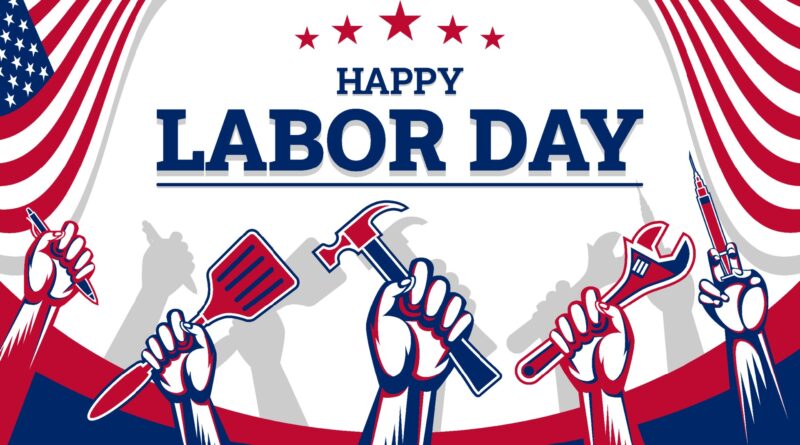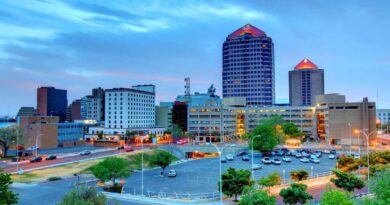History of Labor Day
Labor Day, celebrated on the first Monday of September each year, is a significant national holiday in the United States dedicated to honoring the contributions and achievements of American workers. This day marks the unofficial end of summer, but more importantly, it serves as a reminder of the labor movement’s critical role in shaping the nation’s economic and social fabric. The history of Labor Day is rooted in the struggle for workers’ rights and reflects the ongoing pursuit of fair working conditions, wages, and hours.
The Origins of Labor Day
The Rise of the Labor Movement in the 19th Century
The origins of Labor Day can be traced back to the labor movement of the late 19th century, a period marked by rapid industrialization in the United States. As the nation’s economy transitioned from agrarian to industrial, millions of workers found themselves employed in factories, mines, and mills under harsh conditions. Long hours, low wages, and unsafe working environments were common, leading to widespread dissatisfaction among workers.
In response, labor unions began to form, advocating for better working conditions, fair pay, and the right to organize. The labor movement grew in strength, with unions such as the Knights of Labor and the American Federation of Labor (AFL) leading the charge. These organizations played a crucial role in pushing for reforms that would eventually lead to the establishment of Labor Day as a national holiday.
The First Labor Day Parade
The first Labor Day parade was held on September 5, 1882, in New York City. Organized by the Central Labor Union, the parade was intended to demonstrate the solidarity and strength of the labor movement. Thousands of workers marched through the streets, carrying banners and signs that called for fair wages, reasonable working hours, and improved working conditions. The event culminated in a massive picnic, where workers and their families gathered to celebrate their achievements and enjoy a day of rest.
The success of the first Labor Day parade inspired similar events in other cities, and the idea of a national holiday to honor workers began to gain traction. Labor leaders recognized the importance of establishing a day dedicated to the American worker, not just as a day of rest, but as a symbol of the ongoing struggle for workers’ rights.
The Push for a National Holiday
State-by-State Adoption of Labor Day
Following the success of the early Labor Day celebrations, several states began to officially recognize the holiday. In 1887, Oregon became the first state to make Labor Day a legal holiday. Colorado, Massachusetts, New Jersey, and New York followed suit, each passing legislation to establish the first Monday in September as a day to honor workers. By the end of the 1880s, nearly half of the states had adopted Labor Day as an official holiday.
The growing momentum at the state level led to increased calls for a national holiday. Labor unions, backed by public support, lobbied Congress to pass federal legislation that would establish Labor Day as a national holiday. The push for a national holiday was seen as a way to legitimize the labor movement and recognize the contributions of American workers to the country’s prosperity.
The Pullman Strike and the Federal Recognition of Labor Day
The movement for a national Labor Day holiday gained significant momentum following the Pullman Strike of 1894, one of the most significant labor disputes in American history. The strike began in the company town of Pullman, Illinois, where workers of the Pullman Palace Car Company walked off the job to protest wage cuts and high rents in company-owned housing. The strike quickly spread, leading to a nationwide boycott of trains carrying Pullman cars and causing widespread disruptions to the rail system.
The federal government, under President Grover Cleveland, intervened by sending federal troops to break the strike, leading to violent clashes and the deaths of several workers. The harsh response to the strike sparked outrage among the public and heightened tensions between labor unions and the government.
In an effort to appease the labor movement and restore public order, Congress swiftly passed legislation making Labor Day a national holiday. On June 28, 1894, President Cleveland signed the bill into law, officially recognizing the first Monday in September as Labor Day. The establishment of Labor Day as a federal holiday was seen as a gesture of goodwill toward the labor movement, although it did little to address the underlying issues that had led to the Pullman Strike.
The Evolution of Labor Day
Labor Day in the Early 20th Century
In the early years following its establishment, Labor Day was primarily a celebration organized by labor unions. Parades, rallies, and speeches were common, with union leaders using the day to advocate for workers’ rights and to honor the achievements of the labor movement. The holiday served as a platform for promoting the eight-hour workday, better working conditions, and the right to organize.
As the labor movement gained strength and workers won significant victories—such as the passage of child labor laws, the establishment of minimum wage standards, and the recognition of the right to collective bargaining—Labor Day became a symbol of these accomplishments. The holiday was also a time for workers to come together, celebrate their solidarity, and reflect on the progress made in the fight for fair labor practices.
Labor Day and the New Deal Era
The significance of Labor Day grew during the New Deal era of the 1930s, a period marked by sweeping labor reforms under President Franklin D. Roosevelt. The New Deal introduced landmark legislation such as the National Industrial Recovery Act (NIRA) and the Fair Labor Standards Act (FLSA), which established minimum wage laws, standardized working hours, and granted workers the right to form unions.
Labor Day during this era became a time to celebrate the successes of the New Deal and to rally support for continued labor reforms. Parades and public events often featured speeches by prominent labor leaders and politicians who championed workers’ rights. The holiday solidified its place as an important national observance, reflecting the changing landscape of American labor and the role of government in protecting workers.
Modern Labor Day Celebrations
The Shift from Labor Activism to Leisure
Over time, the character of Labor Day has evolved from its roots in labor activism to a broader celebration of the end of summer and the American workforce. While labor unions continue to use the day to advocate for workers’ rights and to highlight ongoing issues in the workplace, the holiday has also become associated with leisure activities, family gatherings, and community events.
For many Americans, Labor Day marks the unofficial end of summer, a time for barbecues, picnics, and outdoor activities. It is a long weekend that provides an opportunity for rest and relaxation before the start of the new school year and the onset of fall. Retailers often hold Labor Day sales, making the holiday one of the biggest shopping weekends of the year.
Despite this shift, Labor Day remains an important symbol of the labor movement’s achievements and a reminder of the ongoing struggle for workers’ rights. In cities across the country, labor unions continue to hold parades, rallies, and events that honor the contributions of American workers and advocate for fair labor practices.
The Enduring Legacy of Labor Day
Labor Day’s enduring legacy lies in its ability to bring attention to the value of work and the rights of workers. While the nature of work has changed dramatically since the first Labor Day in 1882, the principles that underpinned the labor movement—fair wages, safe working conditions, and the right to organize—remain as relevant today as they were over a century ago.
As we celebrate Labor Day, it’s important to remember the sacrifices made by generations of workers and labor activists who fought for the rights we often take for granted. The holiday serves as both a celebration of the progress made and a call to continue the fight for justice and equality in the workplace.
Conclusion
Labor Day is more than just a long weekend; it is a day steeped in history and significance. It honors the contributions of American workers, celebrates the achievements of the labor movement, and serves as a reminder of the ongoing struggle for fair labor practices. Whether through parades, speeches, or simply enjoying time with family, Labor Day offers an opportunity to reflect on the value of work and the importance of protecting the rights of those who labor. As we commemorate this day, let us remember the rich history that has shaped it and the enduring legacy of those who fought for the rights we enjoy today.
Discover more from City Towner
Subscribe to get the latest posts sent to your email.




